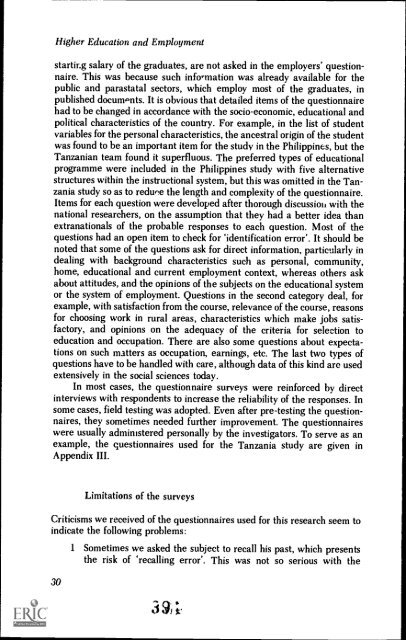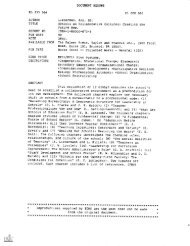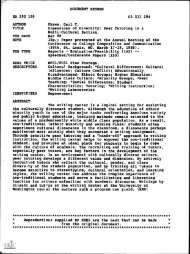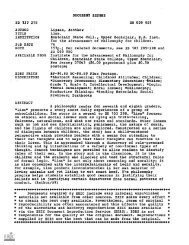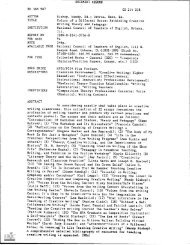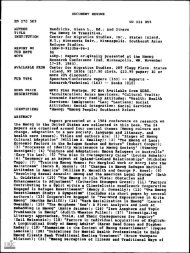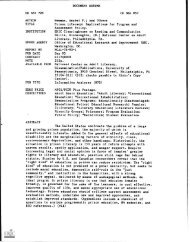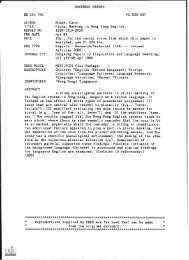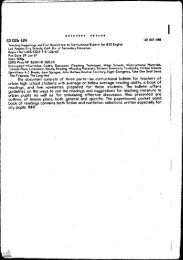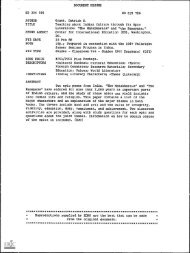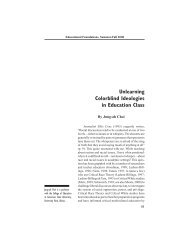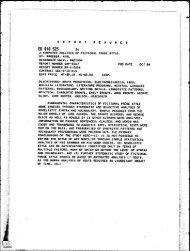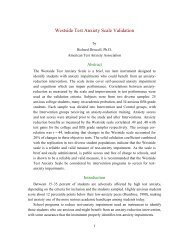Higher Education and Employment: An International Comparative ...
Higher Education and Employment: An International Comparative ...
Higher Education and Employment: An International Comparative ...
You also want an ePaper? Increase the reach of your titles
YUMPU automatically turns print PDFs into web optimized ePapers that Google loves.
<strong>Higher</strong> <strong>Education</strong> <strong>and</strong> <strong>Employment</strong>starting salary of the graduates, are not asked in the employers' questionnaire.This was because such information was already available for thepublic <strong>and</strong> parastatal sectors, which employ most of the graduates, inpublished documents. It is obvious that detailed items of the questionnairehad to be changed in accordance with the socio-economic, educational <strong>and</strong>political characteristics of the country. For example, in the list of studentvariables for the personal characteristics, the ancestral origin of the studentwas found to be an important item for the study in the Philippines, but theTanzanian team found it superfluous. The preferred types of educationalprogramme were included in the Philippines study with five alternativestructures within the instructional system, but this was omitted in the Tanzaniastudy so as to redu'e the length <strong>and</strong> complexity of the questionnaire.Items for each question were developed after thorough discussion with thenational researchers, on the assumption that they had a better idea thanextranationals of the probable responses to each question. Most of thequestions had an open item to check for 'identification error'. It should benoted that some of the questions ask for direct information, particularly indealing with background characteristics such as personal, community,home, educational <strong>and</strong> current employment context, whereas others askabout attitudes, <strong>and</strong> the opinions of the subjects on the educational systemor the system of employment. Questions in the second category deal, forexample, with satisfaction from the course, relevance of the course, reasonsfor choosing work in rural areas, characteristics which make jobs satisfactory,<strong>and</strong> opinions on the adequacy of the criteria for selection toeducation <strong>and</strong> occupation. There are also some questions about expectationson such matters as occupation, earnings, etc. The last two types ofquestions have to be h<strong>and</strong>led with care, although data of this kind are usedextensively in the social sciences today.In most cases, the questionnaire surveys were reinforced by directinterviews with respondents to increase the reliability of the responses. Insome cases, field testing was adopted. Even after pre-testing the questionnaires,they sometimes needed further improvement. The questionnaireswere usually administered personally by the investigators. To serve as anexample, the questionnaires used for the Tanzania study are given inAppendix III.Limitations of the surveysCriticisms we received of the questionnaires used for this research seem toindicate the following problems:301 Sometimes we asked the subject to recall his past, which presentsthe risk of 'recalling error'. This was not so serious with the3 SG.


